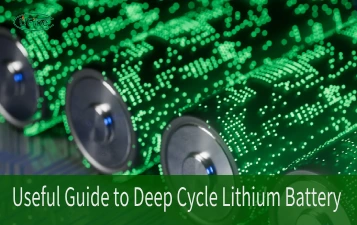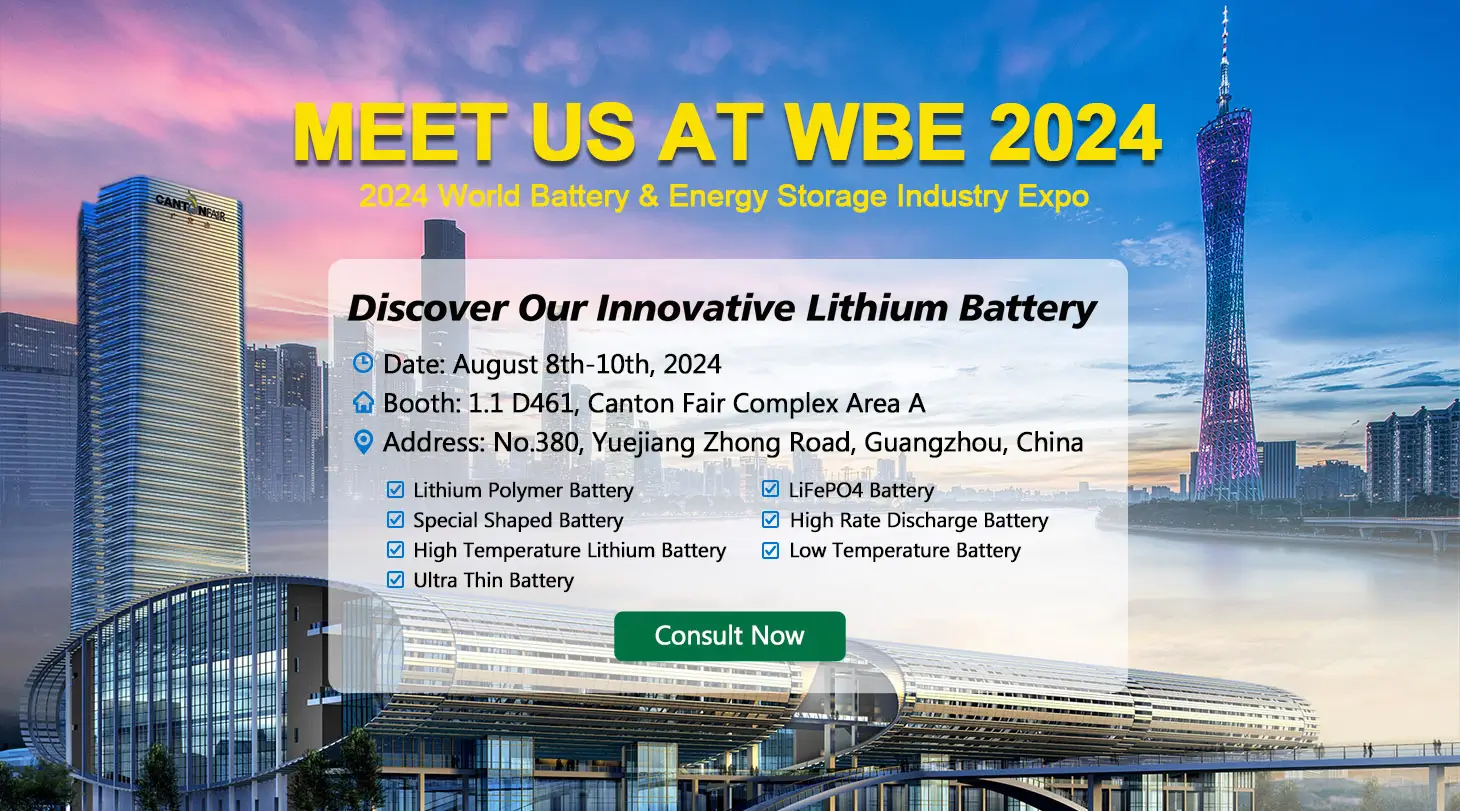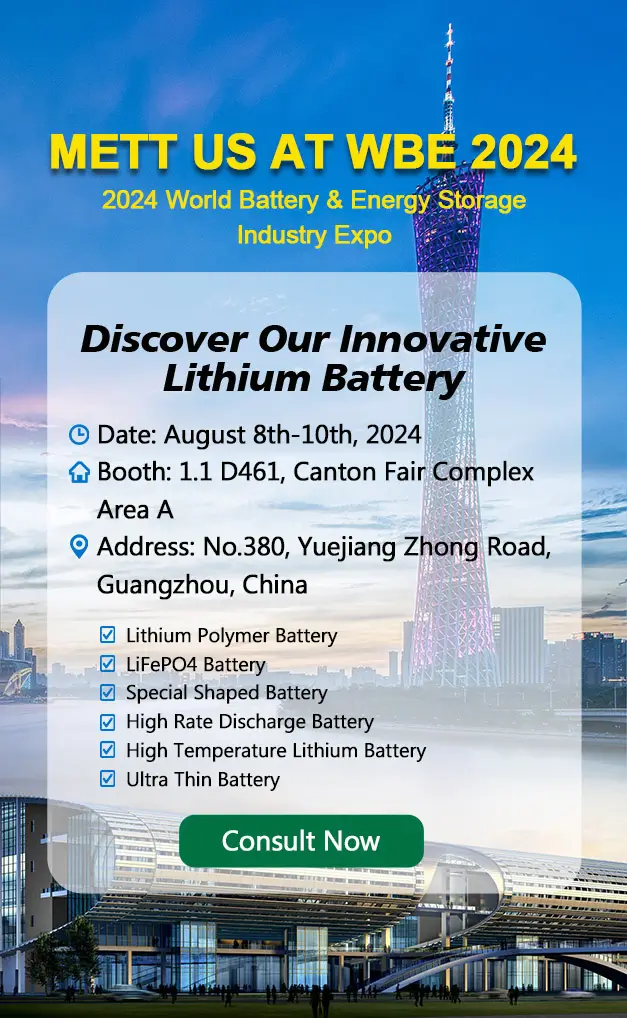What types of lithium batteries? Generally speaking, it will be divided according to positive and negative electrode materials, in addition, it will be divided according to the appearance, battery outsourcing materials, and cell types.
In this article, we will introduce you to the different types of batteries and their advantages and disadvantages.
Part 1. Lithium cobalt oxide battery (LiCoO2)
Lithium cobalt acid battery is a type of lithium-ion battery. There are also lithium manganate, lithium ternary, and lithium iron phosphate batteries. Among them, the lithium cobalt acid battery is best at charging. It has a stable structure, holds a lot of power, and works really well. But, it’s not very safe and costs a lot. It’s mostly used in small and medium-sized devices.
LCO Battery Parameters
Nominal voltage: 3.6V
Operating voltage: 3V-4.2V
Specific energy: 150 Wh/kg to 200 Wh/kg
Charging rate: 0.7-1C, usually charged to 4.2V within 3 hours
Discharge rate: 1C, cut-off voltage is 2.5V. Discharge currents above 1C will shorten battery life.
Cycle life: 500 to 1000 cycles
Thermal runaway: 150℃
LCO Battery Advantages
Excellent electrochemical performance
Excellent processing performance
The high density of vibration helps to improve the specific volume capacity of the battery
Product performance is stable, with good consistency
LCO Battery Disadvantages
Low energy density
Prone to thermal runaway problems
High manufacturing cost
LCO Battery use
Lithium cobalt oxide batteries are mainly used as cathode materials for lithium-ion batteries used in the manufacture of mobile phones laptops and other portable electronic devices.
Part 2. Lithium manganate battery (LiMn2O4)
Lithium manganate battery uses a material called lithium manganate for its positive part. This battery is cheap, safe, and used a lot. The way lithium manganate is made and its properties depend on the materials and how it’s processed. Different ways of making it can change how well it works in batteries.
LMO battery parameters
Nominal voltage: 3.7V
Operating voltage: 3V-4.2V
Specific energy: 100 Wh/kg to 150 Wh/kg
Charging rate: 0.7-1C, usually charged to 4.2V within 3 hours
Discharge rate: 1C, cut-off voltage is 2.5V.
Cycle life: 300 to 700 cycles
Thermal runaway: 250℃
LMO battery advantages
High thermal stability and improved safety
Low internal battery resistance enables fast charging and high current discharge
Low-temperature resistance, good magnification performance, easy preparation
LMO battery disadvantages
Low energy storage capacity
Short cycle life
Sensitive to high-temperature
LMO battery use
Lithium manganate is used in power tools, medical devices, and hybrid and pure electric vehicles.
Part 3. Lithium nickel-cobalt-manganate battery (LiNiMnCoO2 or NMC)
Lithium nickel-cobalt manganate is a battery material that uses less expensive nickel and manganese instead of a lot of cobalt. This makes it cheaper. It works almost as well as lithium cobaltate in batteries. It’s becoming a new material for batteries and is slowly taking the place of lithium cobaltate.
NMC battery parameters
Nominal voltage: 3.6V
Operating voltage: 3V-4.2V
Specific energy: 150 Wh/kg to 220 Wh/kg
Charging rate: 0.7-1C, usually charged to 4.2V within 3 hours
Discharge rate: 1C, cut-off voltage is 2.5V; 2C May work on some cells
Cycle life: 1000 to 2000 times
Thermal runaway: 210℃
NMC battery advantages
High energy density, high voltage platform
Good cycle performance and long service life
Self-discharge is small and has no memory effect
NMC battery disadvantages
Sensitive to high-temperature
Prone to thermal runaway
The extraction of nickel and manganese may affect the environment
NMC battery use
In the fields of new energy vehicles, electric vehicles, air tools, energy storage, intelligent vacuum cleaners, drones, intelligent wearable devices, and so on.
Part 4. Lithium nickel-cobalt aluminate battery (LiNiCoAlO2 or NCA)
Lithium nickel-cobalt aluminate batteries or Ncas have been used since 1999. It has a high specific energy, quite good specific power, and a long service life similar to NMC. Less flattering are security and cost.
NCA battery parameters
Nominal voltage: 3.6V
Operating voltage: 3V-4.2V
Specific energy: 200 Wh/kg to 260 Wh/kg
Charge rate: 0.7, usually charged to 4.2V in 3 hours
Discharge rate: 1C, cut-off voltage is 3V
Cycle life: 500 times
Thermal runaway: 150℃
NCA battery advantages
High energy density, high voltage platform
Good cycle performance and long service life
Self-discharge is small and has no memory effect
NCA battery Disadvantages
High production cost
Sensitive to high-temperature
The extraction and processing of nickel, cobalt, and aluminum has environmental impacts
NCA battery use
NCA is generally used for electric vehicles.
Part 5. Lithium iron phosphate Battery (LiFePO4)
Lithium iron phosphate battery is a kind of lithium battery, like the battery used in our mobile phone, because the positive electrode material of lithium iron phosphate battery is mainly phosphorus, acid, iron, and lithium compound.
LiFePO4 battery parameters
Nominal voltage: 3.2V
Operating voltage: 2.5V-3.65V
Specific energy: 90 Wh/kg to 120 Wh/kg
Charging rate: 0.7-1C, usually charged to 3.65V within 3 hours
Discharge rate: 1C, cut-off voltage is 2-2.5V; Some cells can be 25C
Cycle life: 2500 times
Thermal runaway: 270℃
LiFePO4 battery advantages
High safety performance
Long service life
Good high-temperature performance
Large capacity
No memory effect
LiFePO4 battery disadvantages
The positive electrode of the battery has a small vibration density
With poor electrical conductivity, the lithium-ion diffusion rate is slow.
Poor low-temperature performance
Battery pack life is short
LiFePO4 battery battery use
Because the lithium iron phosphate power battery has the above characteristics, it has a wide range of applications. For example: large electric vehicles, power tools, solar and wind power energy storage equipment, UPS and emergency lights, warning lights, and mining lights instead of small medical equipment and portable instruments.
Part 6. Lithium titanate battery (Li4Ti5O12)
Lithium titanate replaces graphite in the anode of a typical lithium-ion battery, and the material forms a spinel structure. The cathode can be lithium manganate or NMC.
LTO battery parameters
Nominal voltage: 2.4V
Operating voltage: 2.5V-3.65V
Specific energy: 50 Wh/kg to 80 Wh/kg
Charging rate: 0.7-1C, usually charged to 3.65V within 3 hours
Discharge rate: 10C, cut-off voltage is 1.8V
Cycle life: 3000-7000 times
Thermal runaway: 175℃ to 225℃
LTO battery advantages
Ultra-high security
Ultra-long life
Wide range of high and low-temperature operation
High power
Low-cost
Green and environmental protection
LTO battery Disadvantages
Lithium titanate materials have low energy density
Strong water absorption
Battery production has high environmental requirements
LTO battery battery use
The battery is generally used in UPS, electric powertrains, and solar streetlights.
Part 7. Lithium-ion cell morphology classification
In addition to the classification of positive and negative battery materials, we can also be divided according to the shell material, shape, and cell.
By shell material
- Steel battery: as the name suggests, the shell is steel.
- Aluminum shell battery: the same shell is aluminum material.
- Polymer lithium battery: the shell is a polymer material, mostly silver, a few manufacturers do black, and the industry has become black.
By shape
- Cylindrical batteries: used a lot, like 18650,26650, and so on, are used in this general combination. Relatively few combinations can be used as digital products, like early laptops, generally in the 18650s. Mobile power supply, one to five or six combinations, and Tesla’s more than 7,000 18650 series-parallel combinations.
- Square batteries: most of these are polymer batteries, because this polymer is very malleable, can make a lot of shapes, length, width, and height can be adjusted at will, and most digital products are now using this type of battery.
- Special batteries: that is, some strangely shaped batteries, according to the needs of the product, the battery should also be matched in shape, such as the popular smart wearable products, such as smart bracelets, so the battery is also made into a ring.
By cell type
18650 cells
18650 lithium cell is a kind of battery that is 18mm wide, 65mm long, and looks like a cylinder (0 indicates that). This battery is well-developed, works really well, and is used in many things because it’s small. The problem is it’s not as safe as some other batteries and can only be used about 300 times.
Polymer cell
Polymer cells and traditional lithium-ion batteries are different in how they’re made. Lithium batteries are soft and rolled, while polymer batteries have a stiffer shape. Polymer batteries are safer, last a long time (over 500 times), but they cost more, about 100% more than 18650 lithium-ion cells with the same capacity.
Part 8. FAQs
-
Which type of lithium battery is best?
The best type of lithium battery depends on the specific application; for example, lithium-ion (Li-ion) batteries are common for everyday electronics, while lithium iron phosphate (LiFePO4) batteries are preferred for high-power applications like electric vehicles. -
Which is the safest battery?
Lithium iron phosphate (LiFePO4) batteries are considered one of the safest lithium-ion battery chemistries due to their stable chemistry and resistance to overheating. -
What are the three main battery types?
The three main battery types are lithium-ion (Li-ion), nickel-metal hydride (NiMH), and lead-acid, each with different characteristics and applications. -
How to choose a lithium battery?
To choose a lithium battery, consider factors such as voltage, capacity, size, weight, and the specific requirements of the device or application, ensuring compatibility with the intended use. -
Which is better Li-ion or LiPo?
The choice between lithium-ion (Li-ion) and lithium polymer (LiPo) depends on the application; Li-ion is common for everyday electronics, while LiPo is favored in applications requiring a flexible form factor, such as slim devices and wearable technology.
Related Tags:
More Articles

Overview of Deep Cycle Lithium Battery
In this article, we explore the life, voltage, capacity, and charging considerations of deep cycle lithium batteries.
How Long do Lithium Batteries Last?
How long do lithium batteries last? we will explore the factors that influence the lifespan of lithium batteries and provide insights into their longevity.
How to Choose the Best LiFePO4 Battery?
Choose LiFePO4 batteries for superior performance, safety, and versatility in EVs, UPS, and backup power. This guide helps you make informed decisions.
Get 12v Lithium Car Battery As a Power Source for the Ride
Make the right choice for your vehicle's battery needs by installing a 12 volt lithium car battery. You will enjoy maintenance-free longevity with this change.
Everything About A Small Lithium Ion Battery
Discover the features, uses & future potential of a small lithium ion battery. A compact and tiny powerhouse ideal for smartphones, wearables, drones & more.





